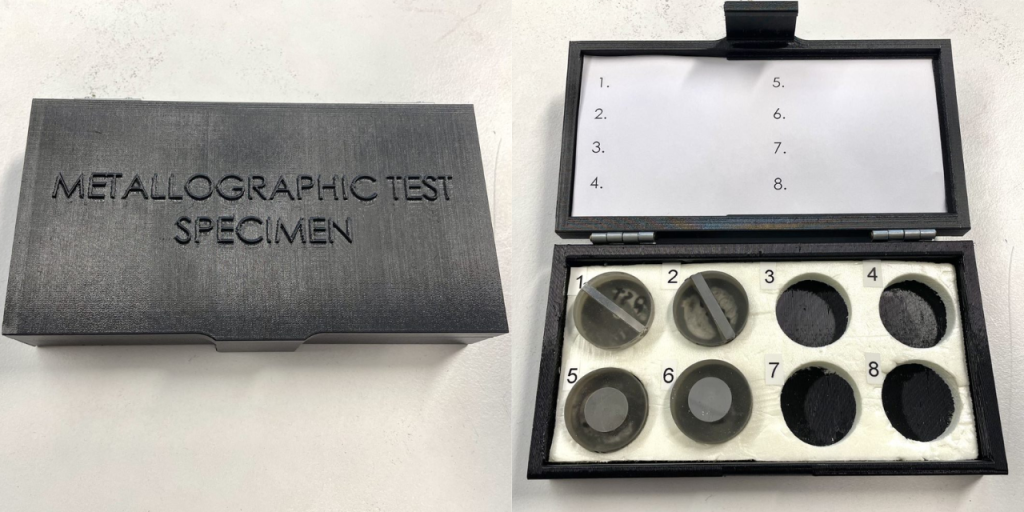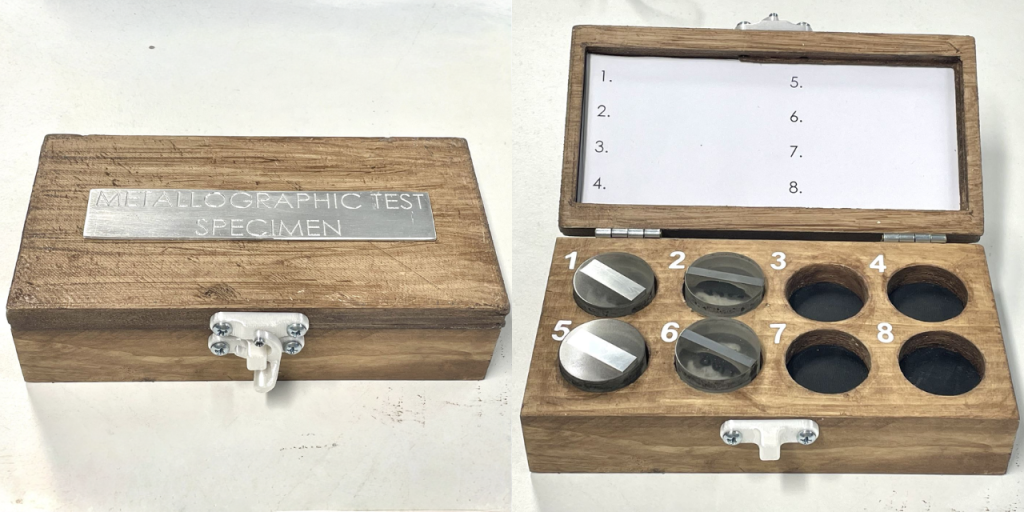As part of the LAB Technology Summer Internship in the summer of 2023, we undertook a project to develop specialized containers for metallographic test specimens. Metallographic tests involve examining the internal structure of polished metallographic samples. Previously, the specimens had been stored improperly in a small open container. This is problematic since the specimen’s top surface must stay intact and protected from dirt, scratches, and fingerprints for clearer structure observation. Two containers have been designed and created for LAB Laboratories of Technology, each capable of storing up to 8 specimens. This article outlines the process of creating the containers as part of the LAB Technology Summer Internship during the summer of 2023.
Prototyping the containers
The team’s primary objective was to create two compact, functional containers to protect test specimens. Moreover, it was crucial for the opening mechanism to be straightforward and simple to use. Another objective was to produce two containers using different materials to enhance the practical learning experience. Manufacturing has been facilitated in the Jamie Hyneman Center at LUT University in Lappeenranta (LUT University 2023).
The first created container, seen in Image 1, has two main parts – a lid and a box, connected by hinges and fasteners. The manufacturing method selected is 3D printing of polylactic acid (PLA) plastic. A locking mechanism is a compliant clipping mechanism that allows the container to open and close efficiently. To store specimen-related information, the lid has internal rails for paper containing names and specimen numbers, with numerical identification stickers near each slot. The container’s name has been added to the top of the lid for easy identification when stored alongside similar containers.

The second container (Image 2) is similar to the plastic counterpart but with adjustments to the design regarding the change of material to wood. One such adjustment is an alternative locking mechanism, which is a straightforward 3D-printed latch mechanism. The box part of the wooden container has been produced as a solid wooden block with drilled holes for the hinges, specimens, and the locking mechanism. The lid has been 3D printed from a composite wood PLA 3D-printing filament.
This material selection facilitated the incorporation of rails for instructional papers within the model, which would be time-consuming to incorporate into a fully wooden lid. The subsequent stage involved painting the new container uniformly with a wood stain. Finally, an aluminum nameplate was designed and produced using a numerically controlled milling machine.

This project gave us a valuable opportunity to get acquainted with machinery and manufacturing methods in the most memorable way – practice. We have also practiced 3D modeling with SolidWorks software while being mindful of the design’s user-friendliness (Dassault Systèmes – SolidWorks Corporation 2023).
Authors
Aleksandra Sennikova is a Mechanical Engineering student at LAB University of Applied Sciences and participated in the LAB Technology Summer Internship 2023.
Aleksandr Shevnin is a Mechanical Engineering student at LAB University of Applied Sciences and participated in the LAB Technology Summer Internship 2023.
Eero Scherman is a Senior Lecturer at LAB University of Applied Sciences in Mechanical Engineering and the coordinator for this specific task in the LAB Technology Summer Internship 2023.
References
LUT University. 2023. Protolab J. Hyneman Center – JHC. Cited 27 Sep 2023. Available https://jhynemancenter.com/
Dassault Systèmes – SolidWorks Corporation. 2023. SolidWorks. Cited 27 Sep 2023. Available https://www.solidworks.com/




